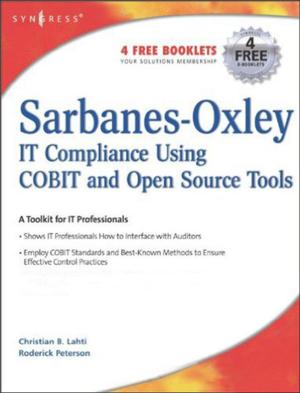Computability Theory
An Introduction to Recursion Theory
Nonfiction, Computers, Advanced Computing, Theory, Science & Nature, Mathematics, Applied| Author: | Herbert B. Enderton | ISBN: | 9780123849595 |
| Publisher: | Elsevier Science | Publication: | December 30, 2010 |
| Imprint: | Academic Press | Language: | English |
| Author: | Herbert B. Enderton |
| ISBN: | 9780123849595 |
| Publisher: | Elsevier Science |
| Publication: | December 30, 2010 |
| Imprint: | Academic Press |
| Language: | English |
Computability Theory: An Introduction to Recursion Theory provides a concise, comprehensive, and authoritative introduction to contemporary computability theory, techniques, and results. The basic concepts and techniques of computability theory are placed in their historical, philosophical and logical context. This presentation is characterized by an unusual breadth of coverage and the inclusion of advanced topics not to be found elsewhere in the literature at this level. The text includes both the standard material for a first course in computability and more advanced looks at degree structures, forcing, priority methods, and determinacy. The final chapter explores a variety of computability applications to mathematics and science. Computability Theory is an invaluable text, reference, and guide to the direction of current research in the field. Nowhere else will you find the techniques and results of this beautiful and basic subject brought alive in such an approachable way.
- Frequent historical information presented throughout
- More extensive motivation for each of the topics than other texts currently available
- Connects with topics not included in other textbooks, such as complexity theory
Computability Theory: An Introduction to Recursion Theory provides a concise, comprehensive, and authoritative introduction to contemporary computability theory, techniques, and results. The basic concepts and techniques of computability theory are placed in their historical, philosophical and logical context. This presentation is characterized by an unusual breadth of coverage and the inclusion of advanced topics not to be found elsewhere in the literature at this level. The text includes both the standard material for a first course in computability and more advanced looks at degree structures, forcing, priority methods, and determinacy. The final chapter explores a variety of computability applications to mathematics and science. Computability Theory is an invaluable text, reference, and guide to the direction of current research in the field. Nowhere else will you find the techniques and results of this beautiful and basic subject brought alive in such an approachable way.
- Frequent historical information presented throughout
- More extensive motivation for each of the topics than other texts currently available
- Connects with topics not included in other textbooks, such as complexity theory















